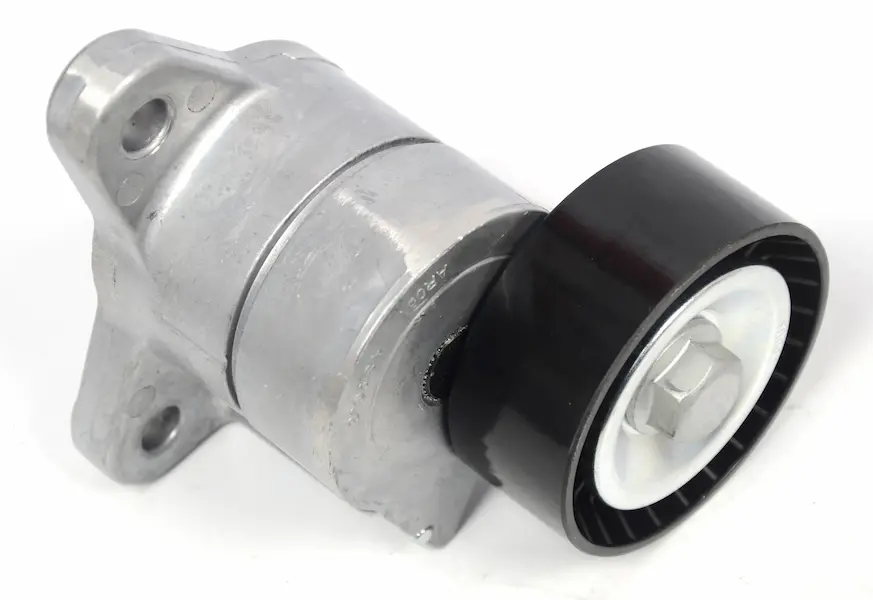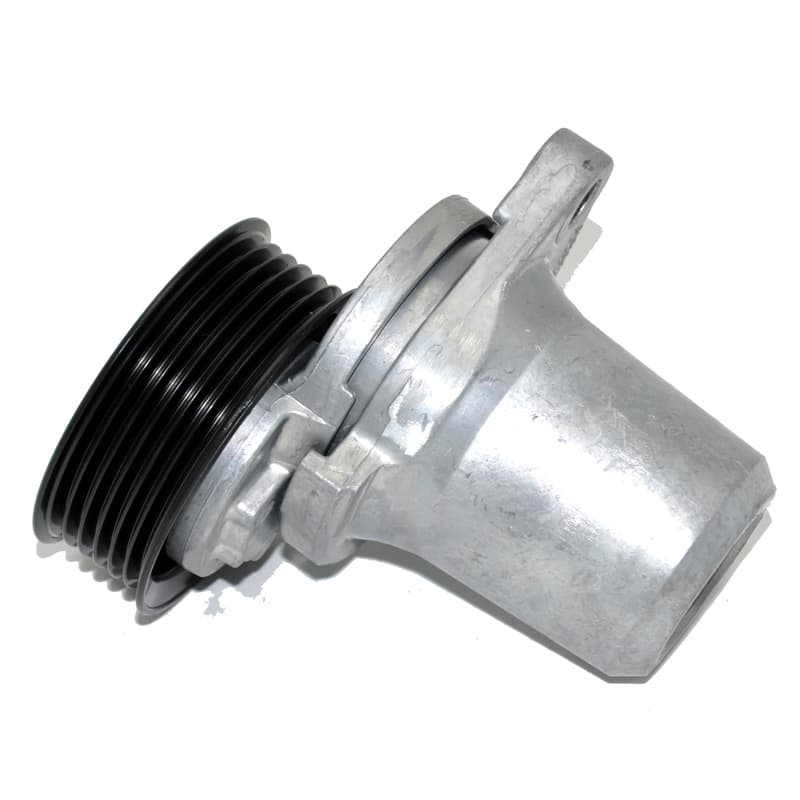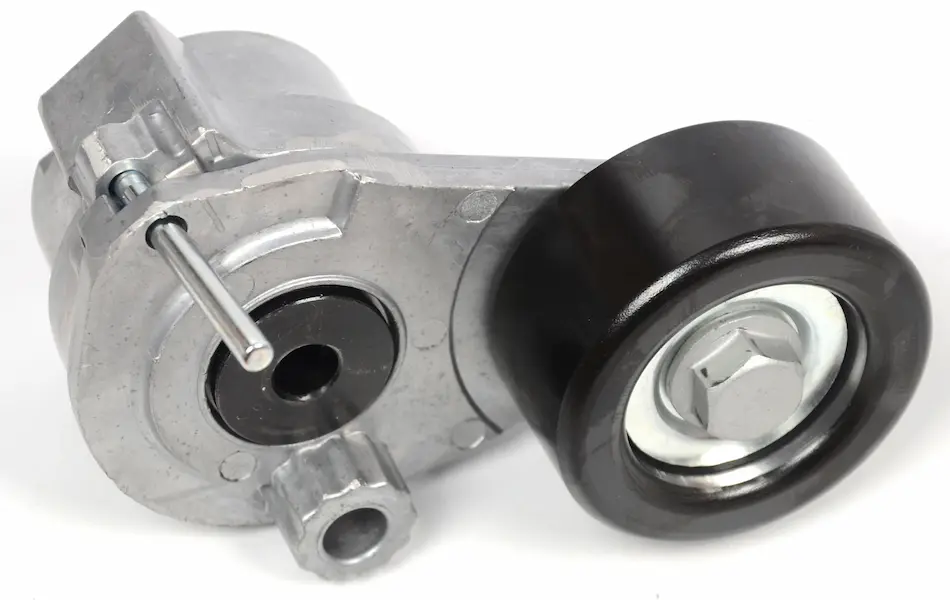소개
휠 허브 베어링 DU 는 모든 차량의 서스펜션 시스템에서 중요한 구성 요소입니다. 바퀴의 부드러운 회전을 촉진하고 차량의 무게를 견디며 가속, 제동, 코너링 등 주행 중 발생하는 다양한 힘을 견뎌냅니다. 휠 허브 베어링 DU로 알려진 특정 유형은 까다로운 조건에서 높은 내구성과 성능을 제공하도록 설계되었습니다. 그러나 모든 기계 부품과 마찬가지로 이러한 베어링은 수명을 극대화하고 차량의 안전과 효율성을 보장하기 위해 적절한 유지보수가 필요합니다.
이 문서는 휠 허브 베어링 DU의 수명을 최대화하는 방법에 대한 포괄적인 가이드를 제공합니다. 베어링의 기능을 이해하고 잠재적인 문제를 조기에 파악하며 모범 유지보수 사례를 따르면 베어링의 수명을 연장하고 비용이 많이 드는 수리를 피하며 최적의 차량 성능을 유지할 수 있습니다.
휠 허브 베어링 DU의 이해
휠 허브 베어링 DU는 일반적으로 베어링과 허브 어셈블리를 단일 구성품으로 결합한 밀폐형 장치로 설계됩니다. 이 베어링은 몇 가지 주요 기능을 담당합니다:
- 차량 무게 지탱: 휠 허브 베어링은 승객 및 화물과 함께 차량의 전체 무게를 지탱합니다. 주행 중 발생하는 수직 및 횡방향 힘을 처리하도록 설계되었습니다.
- 부드러운 휠 회전 활성화: 이 베어링은 마찰을 줄여 바퀴가 부드럽고 효율적으로 회전할 수 있도록 합니다. 이는 제어력을 유지하고 편안한 승차감을 보장하는 데 매우 중요합니다.
- 정렬 및 안정성 유지: 휠 허브 베어링이 제대로 작동하면 휠 정렬과 차량 안정성을 유지하여 안전하고 예측 가능한 핸들링에 기여합니다.
- 오염 물질로부터 보호: 휠 허브 베어링 DU의 밀폐형 설계는 먼지, 물 및 기타 오염 물질이 베어링 어셈블리에 유입되는 것을 방지하여 수명을 연장하는 데 도움이 됩니다.
이러한 베어링의 중요한 역할을 고려할 때 조기 고장을 방지하고 수명을 연장하려면 베어링을 적절하게 유지 관리하는 것이 필수적입니다.
휠 허브 베어링 DU 고장의 일반적인 원인
휠 허브 베어링 고장의 일반적인 원인을 이해하면 예방 조치를 취하는 데 도움이 될 수 있습니다. 다음은 가장 흔한 몇 가지 문제입니다:
- 오염: 휠 허브 베어링은 밀봉 설계에도 불구하고 먼지, 물, 도로 염분과 같은 오염 물질에 의해 손상될 수 있습니다. 이러한 요소는 시간이 지남에 따라 씰을 관통하여 부식과 베어링 마모를 유발할 수 있습니다.
- 과부하: 차량의 무게 용량을 초과하면 휠 허브 베어링에 과도한 응력이 가해져 마모가 가속화되고 고장이 발생할 수 있습니다. 이는 특히 무거운 짐을 견인하거나 운반하는 데 자주 사용되는 차량에서 흔히 발생합니다.
- 부적절한 설치: 휠 허브 베어링을 잘못 설치하면 정렬 불량, 고르지 않은 하중 분배, 마찰 증가로 인해 베어링의 수명이 단축될 수 있습니다.
- 충격 피해: 포트홀, 연석 또는 기타 도로 위험 요소에 부딪히면 휠 허브 베어링이 손상될 수 있습니다. 작은 충격에도 베어링에 찌그러짐이나 균열이 발생하여 무결성이 손상될 수 있습니다.
- 윤활 불량: 휠 허브 베어링 DU는 유지보수가 필요 없도록 설계되었지만, 오래되거나 밀봉되지 않은 베어링은 윤활이 제대로 이루어지지 않아 마찰, 열, 마모가 증가할 수 있습니다.
- 운전 조건: 거친 도로에서의 잦은 주행, 혹독한 기상 조건에의 노출, 공격적인 운전 습관은 모두 휠 허브 베어링의 조기 마모를 유발할 수 있습니다.
휠 허브 베어링의 수명을 최대화하기 위한 모범 사례 DU
휠 허브 베어링 DU를 최대한 오래 사용하려면 다음 모범 사례를 따르세요:
1. 정기 점검 및 유지보수
정기적인 점검은 베어링 고장으로 이어지기 전에 잠재적인 문제를 감지하는 데 중요합니다. 정기 차량 정비 시 전문 정비사에게 휠 허브 베어링의 상태를 점검받으세요. 여기에는 다음이 포함됩니다:
- 비정상적인 소음 듣기: 바퀴에서 윙윙거리거나 갈리는 소리, 으르렁거리는 소리는 종종 베어링 마모 또는 손상의 징후입니다. 조기에 발견하면 더 심각한 문제를 예방할 수 있습니다.
- 휠 플레이 확인: 점검 시 정비사는 바퀴의 과도한 유격이나 움직임을 확인합니다. 이는 베어링이 마모되어 교체가 필요하다는 것을 나타낼 수 있습니다.
- 육안 검사: 육안 검사로 베어링 어셈블리의 녹, 부식 또는 기타 손상 징후를 발견할 수 있습니다. 휠 허브 베어링 DU의 밀폐형 설계는 이러한 문제의 가능성을 줄여주지만, 여전히 점검은 중요합니다.
2. 차량 과적 방지
차량에 대한 제조업체의 권장 적재 용량을 준수하세요. 과부하는 휠 허브 베어링에 추가적인 부담을 주어 마모가 빨라지고 고장이 발생할 수 있습니다. 무거운 짐을 자주 운반하거나 트레일러를 견인하는 경우 더 높은 하중 용량을 위해 설계된 베어링에 투자하는 것을 고려하세요.
3. 조심스럽게 운전하기
운전 습관은 휠 허브 베어링의 수명에 큰 영향을 미칩니다. 마모를 최소화하려면:
- 포트홀에 부딪히지 않기: 가능한 한 포트홀이나 도로의 위험 요소를 피하세요. 피할 수 없다면 속도를 줄여 베어링에 가해지는 충격을 줄이세요.
- 모서리를 부드럽게 처리: 급격한 코너링은 휠 허브 베어링에 추가적인 횡력을 가하여 마모를 가속화합니다. 회전할 때는 속도를 줄여 베어링에 가해지는 스트레스를 줄이세요.
- 부드러운 브레이크: 급제동은 휠 허브 베어링에 가해지는 하중을 증가시킵니다. 급정거를 피하기 위해 안전한 차간 거리를 유지하세요.
4. 올바른 설치 확인
휠 허브 베어링을 교체해야 하는 경우 자격을 갖춘 전문가가 올바르게 설치했는지 확인하세요. 올바른 설치에는 다음이 포함됩니다:
- 올바른 도구 사용: 휠 허브 베어링을 손상시키지 않고 설치하려면 특수 공구가 필요한 경우가 많습니다. 전문 정비사는 작업을 올바르게 수행하는 데 필요한 장비를 갖추고 있습니다.
- 다음 토크 사양: 휠 허브 베어링은 올바른 토크로 설치해야 합니다. 토크가 너무 많거나 적으면 정렬 불량, 과도한 마찰 및 조기 마모가 발생할 수 있습니다.
- 베어링을 올바르게 정렬하기: 고른 하중 분배와 원활한 작동을 위해서는 올바른 정렬이 필수적입니다. 정렬이 잘못되면 마모가 고르지 않게 발생하고 베어링의 수명이 단축될 수 있습니다.
5. 고품질 베어링 사용
휠 허브 베어링 DU를 교체할 때가 되면 항상 제조업체의 사양을 충족하거나 초과하는 고품질 부품을 선택해야 합니다. 저렴한 베어링은 초기 비용을 절약할 수 있지만, 고품질 옵션의 내구성과 정밀도가 부족하여 교체 빈도가 높아지고 전체 비용이 높아지는 경우가 많습니다.
6. 오염으로부터 보호
휠 허브 베어링 DU는 밀봉되어 유지보수가 필요 없도록 설계되었지만, 오염으로부터 보호하기 위해 추가 조치를 취할 수 있습니다:
- 정기적으로 차량 세차하기: 정기적인 세척은 휠 허브 베어링을 손상시킬 수 있는 먼지, 도로 염분 및 기타 오염 물질을 제거하는 데 도움이 됩니다.
- 깊은 물 속을 운전하지 마세요: 깊은 물 속을 주행하면 베어링 어셈블리에 물이 스며들어 부식과 마모를 일으킬 수 있습니다. 물 속을 주행해야 하는 경우 천천히 주행하고 나중에 베어링을 점검하세요.
7. 조기 경고 징후 모니터링
차량의 핸들링, 소음 또는 성능의 변화에 주의를 기울이세요. 휠 허브 베어링 문제의 조기 경고 신호는 다음과 같습니다:
- 스티어링 휠의 진동: 스티어링 휠에서 진동이 느껴진다면 휠 허브 베어링이 마모되었거나 손상된 것일 수 있습니다.
- 한쪽으로 당기기: 차량이 한쪽으로 쏠리는 것은 휠 허브 베어링이 고장난 것일 수 있습니다. 다른 문제로 인해 발생할 수도 있으므로 전문가에게 점검을 받는 것이 중요합니다.
- 고르지 않은 타이어 마모: 고르지 않은 타이어 마모는 휠 허브 베어링 결함으로 인한 정렬 불량의 신호일 수 있습니다. 타이어가 고르지 않게 마모되었는지 정기적으로 점검하고 근본적인 원인을 즉시 해결하세요.
결론
휠 허브 베어링 DU의 수명을 최대화하려면 정기적인 정비, 신중한 운전, 잠재적인 문제에 대한 즉각적인 주의가 필요합니다. 이 가이드에 설명된 모범 사례를 따르면 베어링의 수명을 연장하고 예기치 않은 고장의 위험을 줄이며 차량의 안전과 성능을 유지할 수 있습니다.
고품질 베어링에 투자하고, 적절한 설치를 보장하며, 오염으로부터 보호하는 것은 오래 지속되는 내구성을 달성하기 위한 핵심 단계입니다. 휠 허브 베어링 DU는 열악한 조건을 견디도록 설계되었지만 수명은 궁극적으로 얼마나 잘 관리하고 유지하느냐에 따라 달라진다는 점을 기억하세요. 올바른 접근 방식을 통해 차량의 원활한 작동을 유지하고 베어링 고장으로 인한 값비싼 수리를 피할 수 있습니다.




